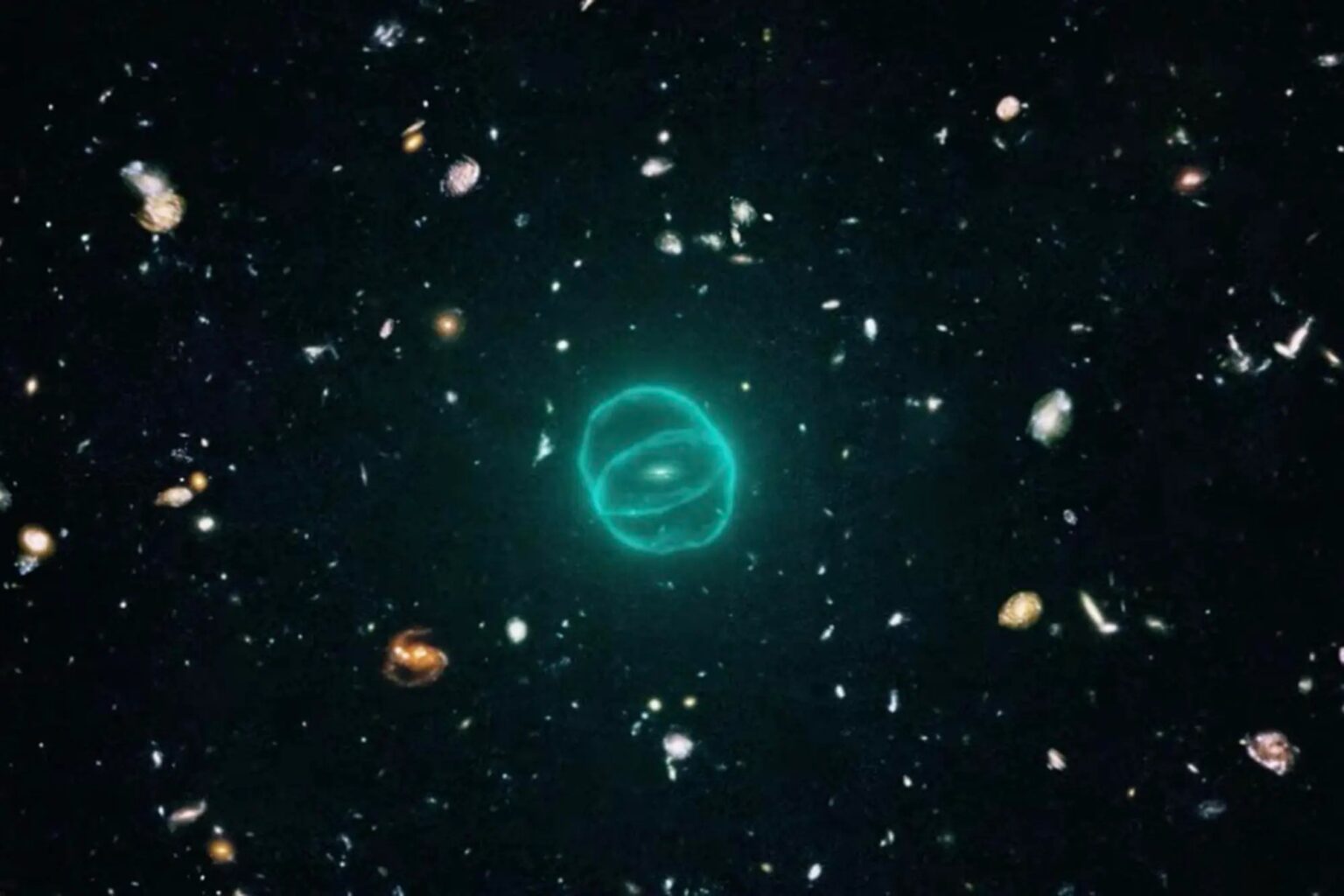A team of astronomers working with the massive MeerKAT antenna in southern Africa has discovered a mysterious ring emitting radio waves in space. It has been named Kýklos. Scientists point out that although this object is similar to some others found earlier, it is still significantly different from them.

Amazing radio ring
An amazing radio ring has been discovered in space. Its discovery was announced by an international team of scientists working with the massive MeerKAT antenna located in South Africa. They work together to create one powerful telescope.
It saw something far away in space that was not visible to the naked eye at all, but in the radio range it looked like a ring. It has an almost regular shape and is slightly lumpy. Its location is 6° from the north galactic plane and quite close to the center of the Milky Way.
The object was first designated J1802-3353 and then given the proper name Kýklos. It is translated from the Greek as “ring.” Its diameter is 80 arcseconds and a thickness of about six arcseconds.
What are such objects?
No matter how mysterious the new object might look, scientists have seen something similar several times before. They have been observing formations that sound strange radio rings for several years. It’s worth noting that this doesn’t mean they suddenly appeared out of nowhere, it’s just that our observational equipment has improved so much that we’ve finally seen them.
The origin of the strange radio rings is still a mystery. It is clear that they are giant formations of highly rarefied but energy-radiating gas. And regarding how they sit, astronomers have not yet made any assumptions.
Besides, Kýklos is nothing like them at all. It was found at a lower galactic latitude than all previous radio rings. In addition, it is an order of magnitude weaker than them at 1.1 GHz. So it may actually be something else.
The authors of the study suggest that it may be attributed to the outer space of a Wolf-Raye-type star. These luminaries have such a strong stellar wind that it tears off their outer layers. However, the theory of the origin of Kýklos requires further clarification.
According to phys.org


